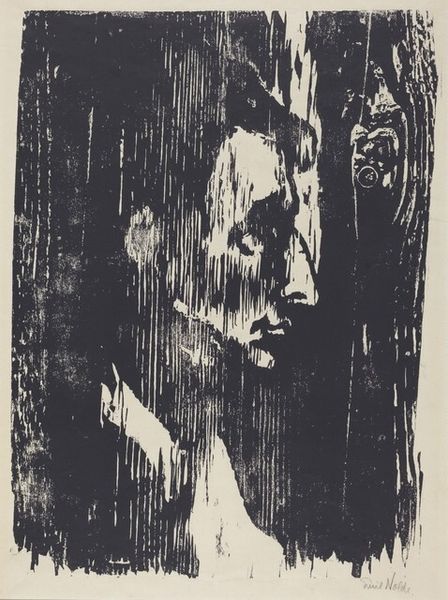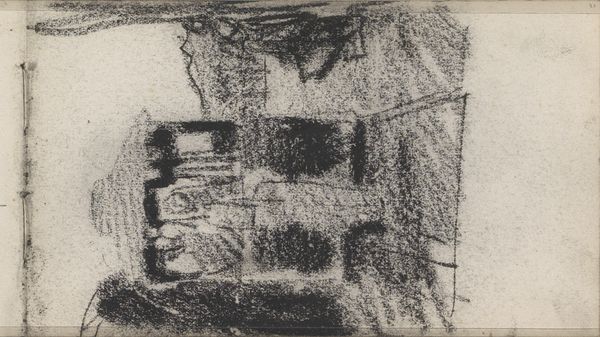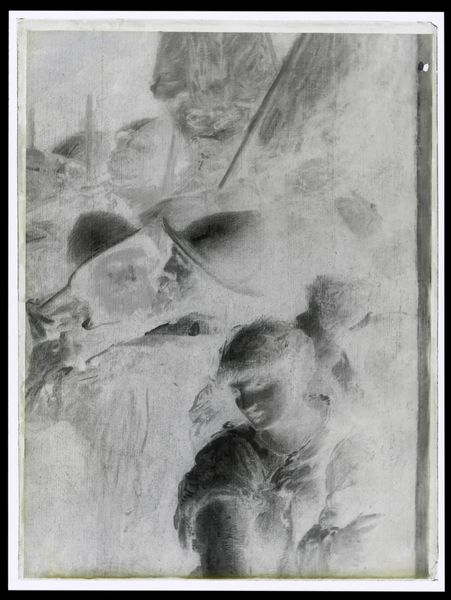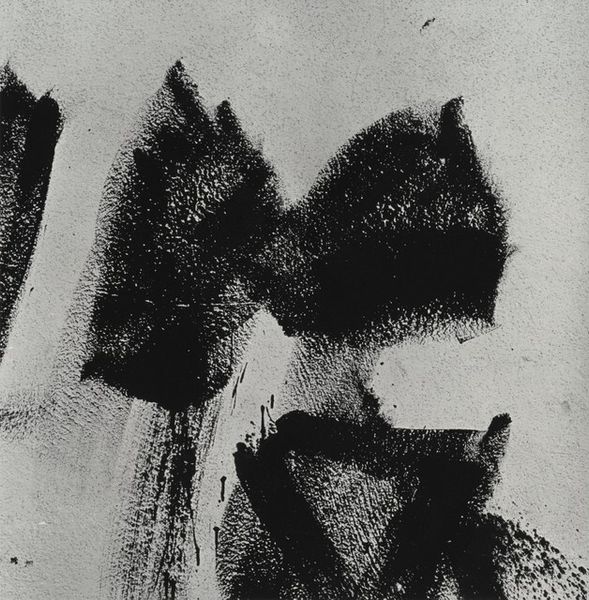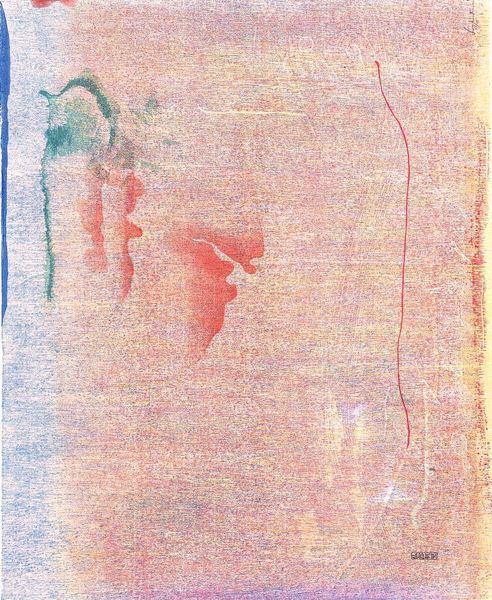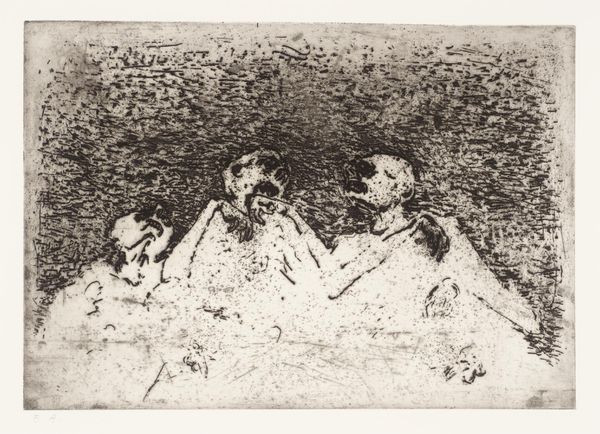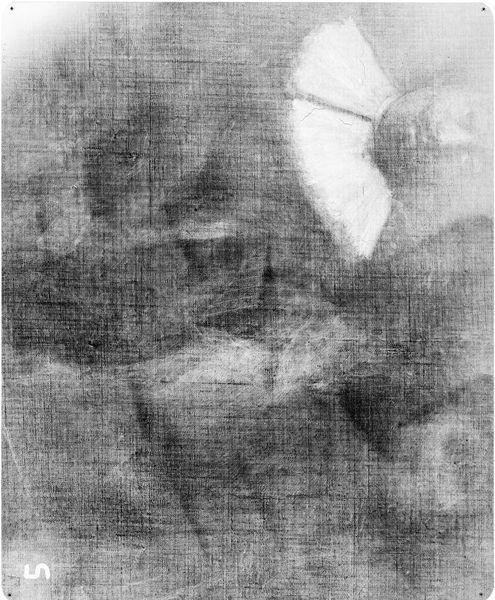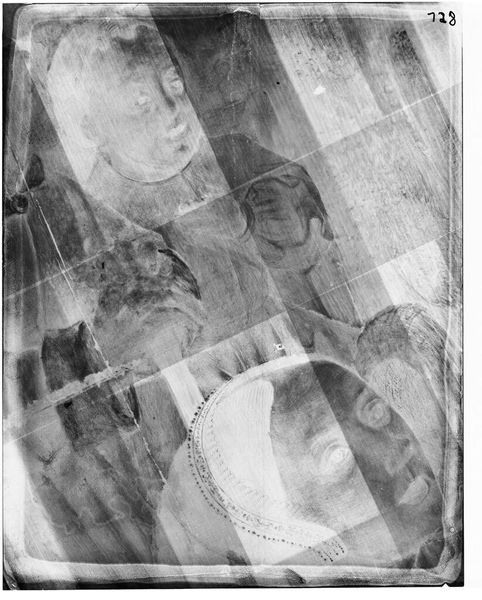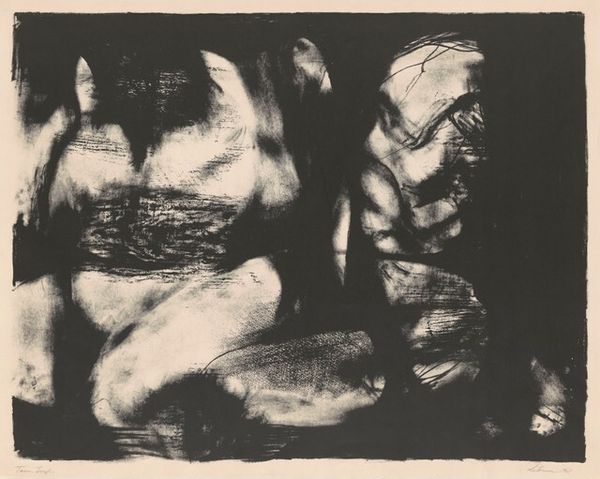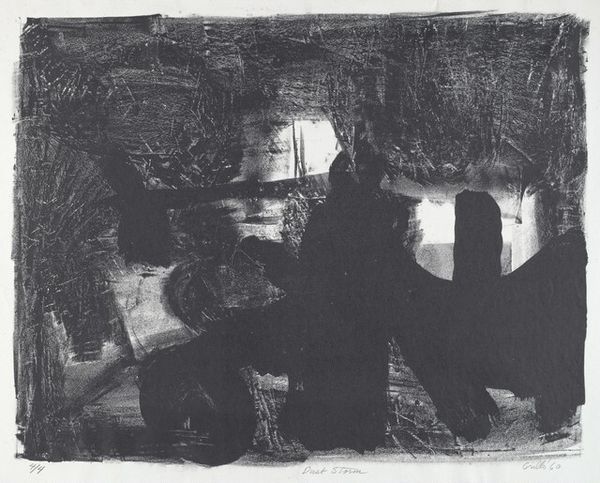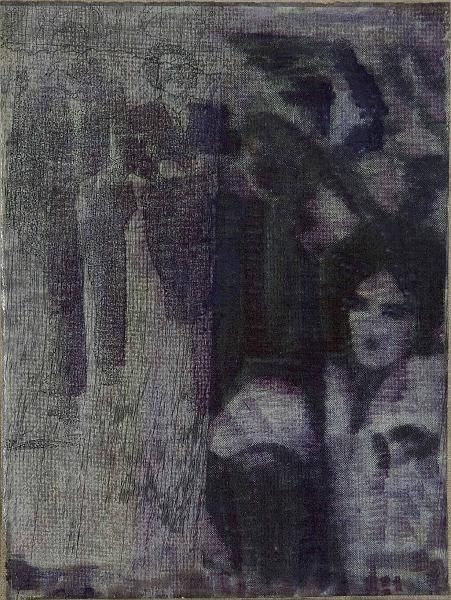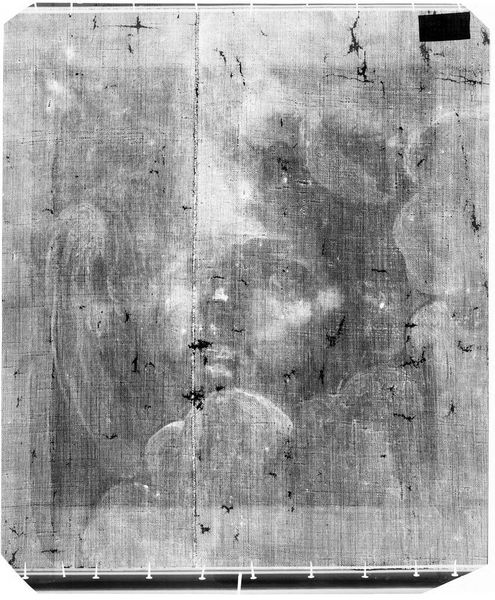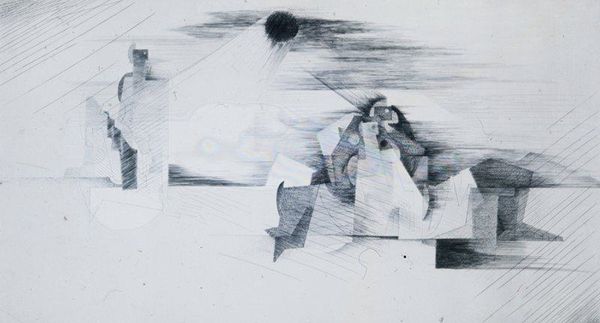
drawing, textile, paper, pencil, charcoal
#
portrait
#
drawing
#
pencil sketch
#
pattern
#
textile
#
charcoal drawing
#
figuration
#
paper
#
text
#
pencil
#
charcoal
#
charcoal
Copyright: Bracha L. Ettinger,Fair Use
Curator: Bracha Ettinger's "Drawing from Matrixial Borderline," created in 1991, immediately strikes me with its haunting quality. The monochromatic tones, likely achieved with charcoal and pencil on paper, give it a spectral, almost ethereal presence. Editor: Spectral is right. The way the figures seem to emerge and recede into the textured background definitely creates a strong emotional resonance. I find it particularly moving. I’m wondering what the means of its production say about it. I mean, look at the intense labor implied by that dense crosshatching and the almost textile-like texture, like a hand-woven tapestry made of graphite. Curator: Absolutely, and that texture contributes significantly to the drawing’s themes. Ettinger’s theories on the "matrixial borderzone" – a shared space of connection and differentiation between self and other – are visualized beautifully here. We see permeable boundaries, a sense of merging and separation which addresses broader social and political conversations around the idea of borders and what it means to occupy different identities. Editor: And it’s important to remember this was made in 1991. Think about the social climate, the ongoing discussions surrounding identity, representation, and difference. This work invites viewers to contemplate not only individual experience but also our shared humanity, through this almost laborious creation of the artwork that allows us to access themes of connection. Curator: I agree, it goes beyond simply depicting a figure or figures. The materials, the visible labor – it speaks to the complex and often painful processes of building connections with others. Ettinger uses the limitations and strengths of the chosen media to great effect. The use of textiles too alludes to feminized labour within art. Editor: This piece speaks to how identities intersect and interrelate. Considering this intersectionality provides new lenses to critique dominant social structures by considering those previously placed at the margins, especially when discussing marginalized groups of people. The blurring of lines makes it very accessible to the human condition as well. Curator: It does. It makes us think of all the many possibilities in production and connection. Thank you. Editor: My pleasure, a brilliant work indeed!
Comments
No comments
Be the first to comment and join the conversation on the ultimate creative platform.
